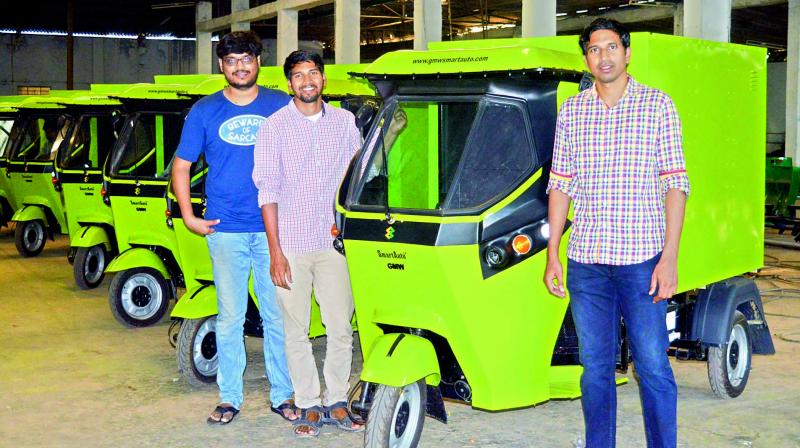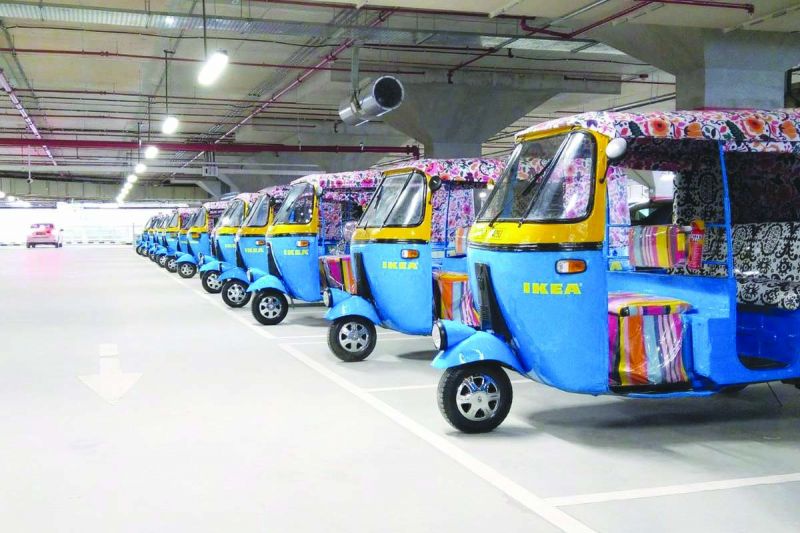Driving the future
Hyderabad-based Gayam Motor Works are producing and supplying safe and environment-friendly vehicles to Ikea.

Painted with Ikea’s signature blue and yellow colours along with featuring an eclectic mix of patterned canopies and cushions, solar rickshaws are part of Ikea’s broader goal of creating culturally-relevant shopping experiences.
Interestingly, at least 20 per cent of the IKEA Hyderabad store’s delivery fleet comprises of electric rickshaws supplied by Hyderabad-based Gayam Motor Works. The compact, three-wheeled vehicles are used widely throughout India to navigate the notoriously dense traffic found in large cities. Ikea’s fleet is charged at the store, running off on solar power harvested from some 4,000 panels atop the building roof. Any excess energy gathered is used for lighting and other uses inside the store.
 Autos painted with Ikea’s signature colours blue and yellow
Autos painted with Ikea’s signature colours blue and yellow
Gayam Motor Works has been working with e-vehicles for the last four years and is revolutionising the logistics sector with their smart autos. It was the combined effort of Harsha Bavirishetty, Raja and Rahul Gayam’s knowledge and expertise in EV components and technology which helped GMW launch their first batch of electric three-wheelers in 2015 with lithium-ion batteries, chosen keeping in mind the Indian roads and weather conditions.
According to Harsha, the shift towards EVs has taken off and it will be the mode of transport for the future. But there are some basic clauses that need to be addressed first. “There is a dearth of charging stations in India. Electric vehicles are a two-sided market with charging and battery infrastructure on one side and sustainability on another. For people to adapt to electric vehicles, the infrastructure has to be on point. Firstly, like cities abroad, there should be charging points available at every interval. As of now, that’s not the case here, therefore with years of R&D, we have developed batteries that can be swapped for three-wheelers,” explains Harsha.
While their innovation is a first in Indian technology for three wheelers, Harsha says that even the fast charging facility needs the vehicles to be at the station for at least 30-40 minutes, which is unreasonable. However, the battery swapping mechanism needs only a minute to switch. Talking about the scope, he says, “Sadly the large players are not looking into the scope this industry offers.
Autos are a commoners’ vehicle — either to travel or to deliver cargo.”

